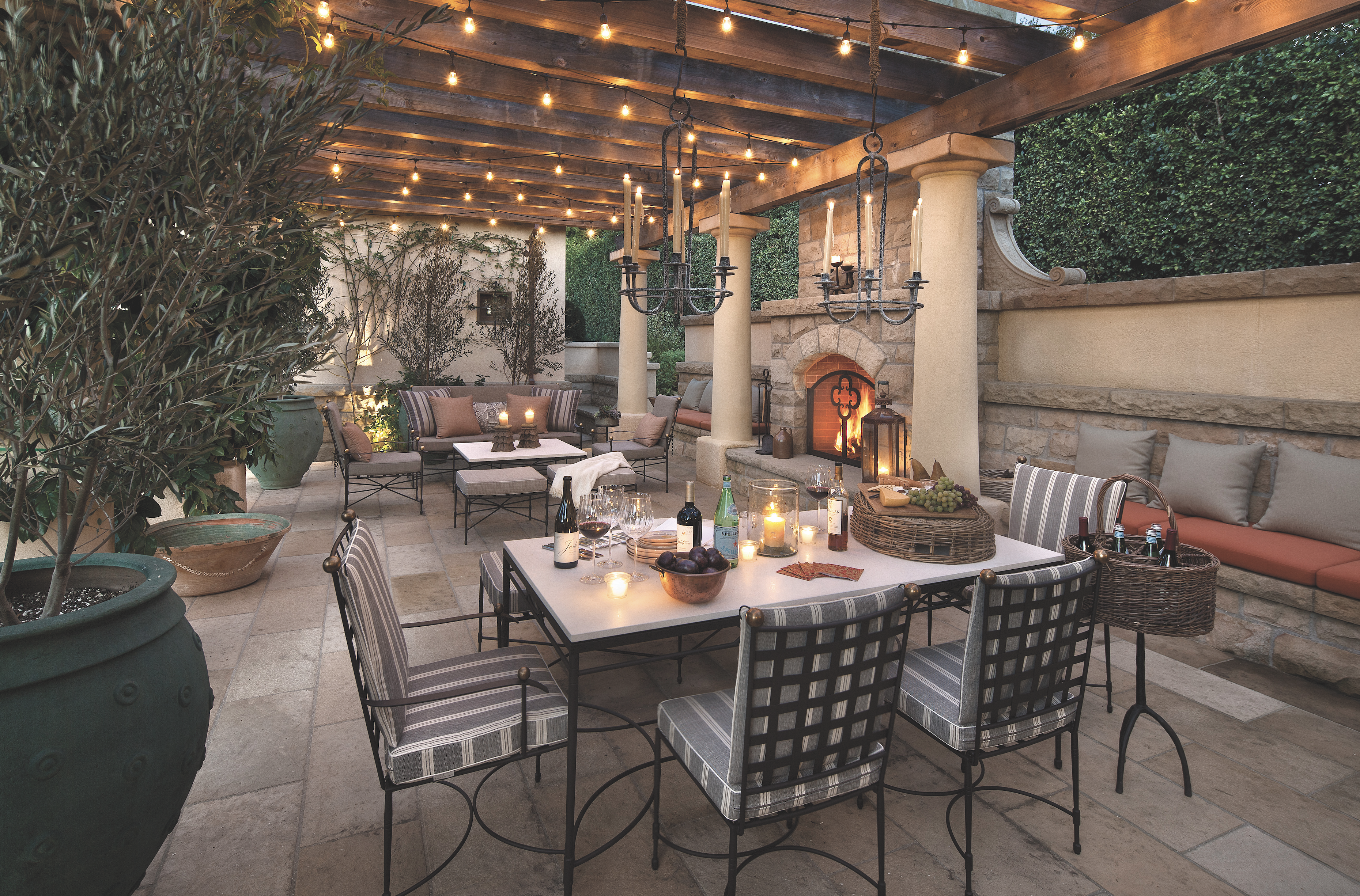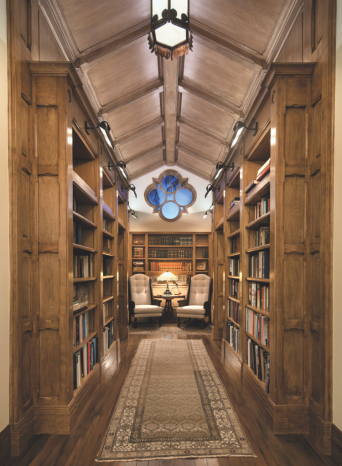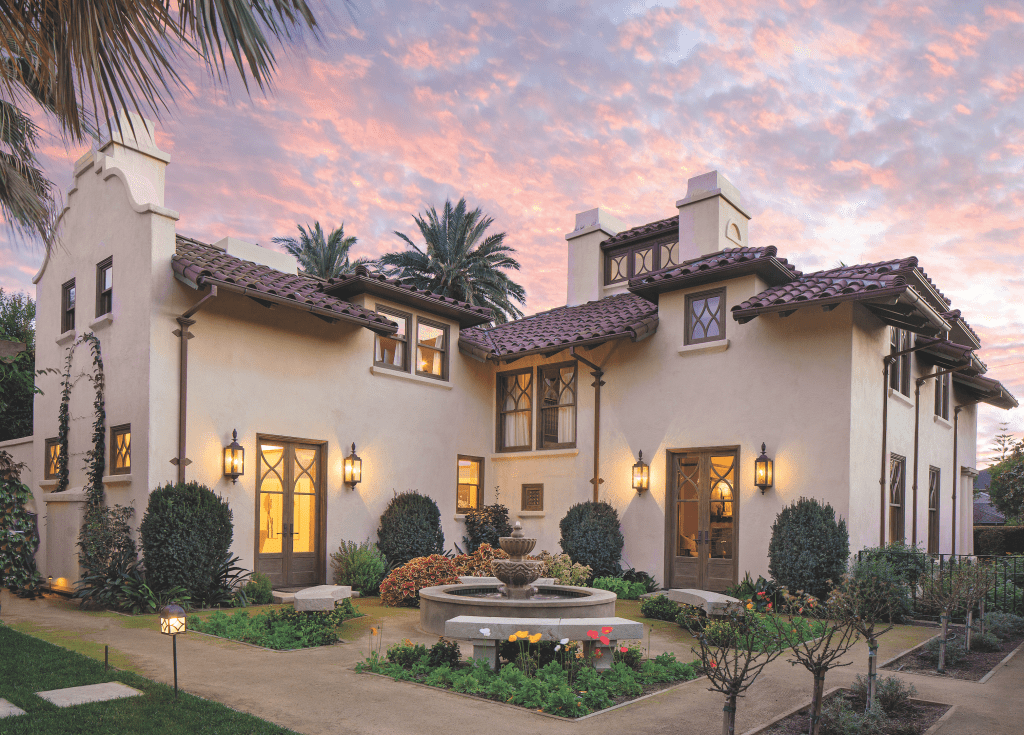Anatomy of a Historical Restoration on Crocker Row
Award-Winning Santa Barbara Home on the Market

The neighborhood architecture of any long-gone era carries the intrigue of a former way of life and the challenges of its preservation. When home restorations are executed poorly, the history can be lost forever. But when they’re successful, a deteriorating home returns to form and in essence becomes a clear window to the past.
One such successful restoration unfolded at 2050 Garden Street on historic Crocker Row for a home originally commissioned in the 1890s by William H. Crocker, son of railroad magnate Charles Crocker. Designed by Arthur Page Brown — best known for creating the Spanish Revival style of architecture — to accommodate wealthy vacationers, the 3,700-square-foot home featured a kitchen and servants’ quarters on the ground floor and four upstairs bedrooms with views across town.
Over the decades, some of the home’s character was obscured by upgrades and damaged by the 6.8 earthquake in 1925. The goal was to update the home with special attention to its place in history, remembers Geoff Crane, cofounder and president of Giffin & Crane General Contractors, leading the project.
“Every day, we had to come up with solutions to fit historical circumstances and constraints,” Crane said.

The endeavor’s outset involved the compilation of the historic record of ownership and the various changes that had been made to the home throughout the decades. Then, before major work began, crews catalogued, disassembled, and stored original doors, two fireplace mantles, an interior staircase and baluster, and other major features, including nearly 30 original windows, which proved a particularly delicate problem.
The old linseed-oil putty adhering the glass to the sashes was dry and brittle, remembered Dan Formanek, a master builder with Giffin & Crane and site superintendent on the project. After consulting an expert window restorer, each window was placed inside a heated box to soften the putty slowly and uniformly until “we could get a tool under it to remove it,” Formanek explained.
After teams replaced the original boulder foundation with a concrete footing — and hiding its visible perimeter with veneers cut from the original sandstone — the renovation moved inside “to peel back the layers,” Formanek remembered. “We took the house apart, piece by piece, stripped it completely,” leaving a shell of interior studs and, after removing the plaster, an exterior of original board sheeting. “The building was among the first wood-framed plaster homes in Santa Barbara,” he added. “It was a unique construction for the time.”
As crews exposed the bones of the home, more of its history came to light. For example, after removing layers of flooring, they could tell by past wear and tear that the downstairs floor plan had been rearranged slightly.
As work progressed, new hardwood flooring was treated to re-create original sheen and texture. The kitchen features all-new period cabinetry by Starbuck Minikin. Upstairs, teams opened up a library space to showcase the home’s quatrefoil window, eliminated two bedrooms, and added a master bath.
Working through the details, Giffin & Crane maintained the home’s architectural and historical integrity — that clear window to the past — with help from Harrison Design and Post Hazeltine Associates. At the same time, they added modern conveniences — such as air conditioning and radiant flooring — hiding contemporary systems behind moldings, in closets, and under the house.

“The augmentations were done in the strictest of methods to emulate original design and intent,” said Formanek. “It’s as close an approximation to the original building as possible, given that it’s an up-to-date home meant to be lived in.”
The project set the bar very high in 2015, winning the City of Santa Barbara’s inaugural Edwards/Plunkett Award for exemplary design for the renovation, restoration, or rehabilitation of a historic structure, and its lead architect, Anthony Spann, won the Architectural Heritage award by the Santa Barbara chapter of the American Institute of Architects.
Start to finish, Giffin & Crane spent about three years on the house. “The whole project was us using a lot of interesting out-of-the-box ideas to accomplish things,” Formanek reflected. “Like that old adage: If you can imagine it, you can make it happen.”
2050 Garden Street is currently on the market for $5.5M, listed by the The Morehart Group. Contact Susan Pate at (805) 895-9385.




You must be logged in to post a comment.